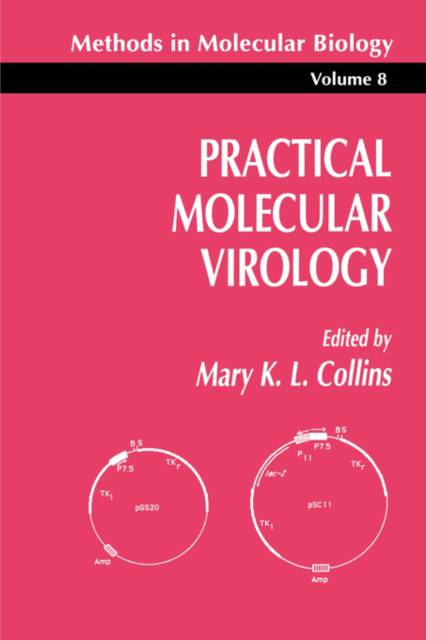
- Afhalen na 1 uur in een winkel met voorraad
- Gratis thuislevering in België vanaf € 30
- Ruim aanbod met 7 miljoen producten
- Afhalen na 1 uur in een winkel met voorraad
- Gratis thuislevering in België vanaf € 30
- Ruim aanbod met 7 miljoen producten
Zoeken
Omschrijving
Recombinant viruses provide an efficient mechanism for the transfer and expression of DNA in eukaryotic cells. First, the transfer of DNA by viral infection-utilizing specific cell surface receptors and cellular intern- ization mechanisms-occurs much more readily than DNA transfer via uptake induced by such physical methods as calcium phosphate coprecipitation or electroporation. Second, the novel strategies employed by the virus to express its own genes can then be "hijacked" in the recombinant virus to express the researcher's gene of interest The purpose of Practical Molecular Virology isthus to compile a coll- tion of readily repeatable gene transfer and expression methods from wo- ers expert in the use of a variety of recombinant viral vectors . These include those designed for the production of recombinant antigens, such as pol- virus and yeast Ty-VLPs; those giving very high levels of recombinant protein expression, for example, baculovirus, vaccinia virus, and SV40; and finally viral vectors used for efficient, stable gene transfer to eu otic cells, such as retroviruses and herpesviruses . The first chapter describes the viral life cycle for each virus, and explains how this can be adapted to allow construction of recombinant vectors. Subsequent chapters deal with methods for producing and char- terizing recombinant viruses . I make no apology for the hyperproliferation of chapters dealing with recombinant retroviral methods and applications, since I believe this is clearly proportional to the recent expansion of interest in these techniques.
Specificaties
Betrokkenen
- Auteur(s):
- Uitgeverij:
Inhoud
- Aantal bladzijden:
- 330
- Taal:
- Engels
- Reeks:
- Reeksnummer:
- nr. 8
Eigenschappen
- Productcode (EAN):
- 9780896032996
- Verschijningsdatum:
- 31/10/1991
- Uitvoering:
- Paperback
- Formaat:
- Trade paperback (VS)
- Afmetingen:
- 152 mm x 229 mm
- Gewicht:
- 503 g

Alleen bij Standaard Boekhandel
+ 251 punten op je klantenkaart van Standaard Boekhandel
Beoordelingen
We publiceren alleen reviews die voldoen aan de voorwaarden voor reviews. Bekijk onze voorwaarden voor reviews.











